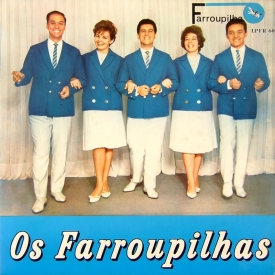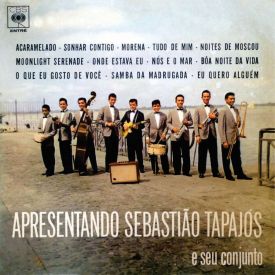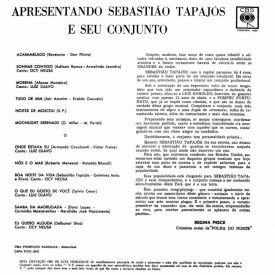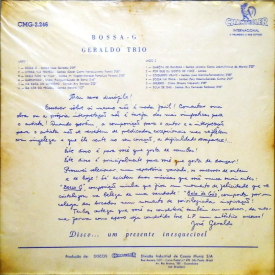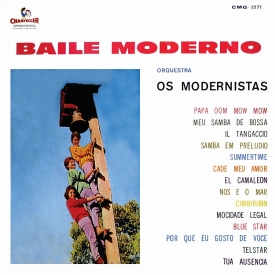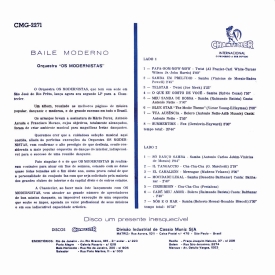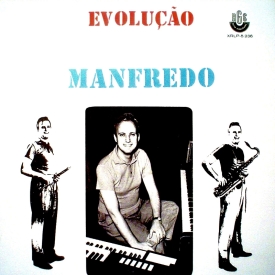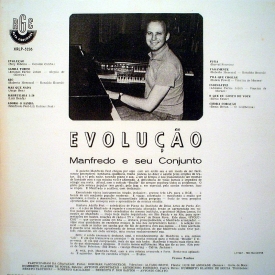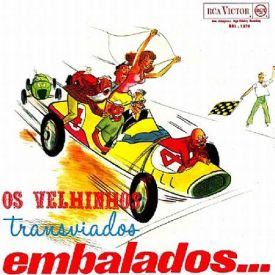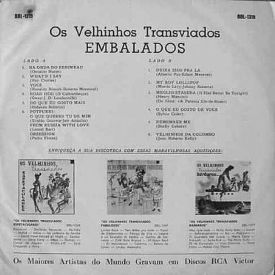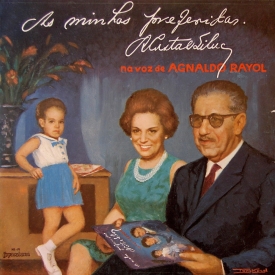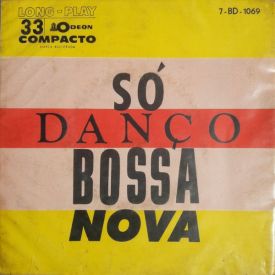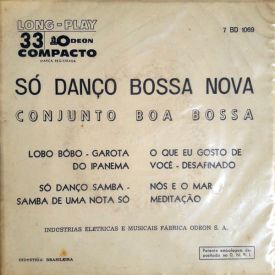
- Miltinho — Miltinho
(1961) RCA Victor BBL 1113
- Silvio Aleixo — Estréia
(1965) Philips P 632.770 L
- Wilson Simonal — Wilson Simonal
(1965) Odeon MOFB 3419
- Geraldo Vandré — Geraldo Vandré
(1964) Áudio Fidelity AFLP 2008
- Geraldo Vandré — Rosinha/Só Por Amor/Depois É Só Chorar/Marcha Do Amor Sem Esperança
(1964) Áudio Fidelity n/a
- Bené Nunes — Telefone Para 27-9696
(1959) Fantasia/Philips FLP 2020
- Taiguara — Taiguara!
(1965) Philips P 632.764 L
- Sylvio Cézar — Amor Demais
(1963) Musidisc Hi-Fi 2074

This double-page spread from the book features Geraldo Vandré and Sylvio Cézar, two singer-songwriters who could not be more different.
Geraldo Pedrosa de Araújo Dias (*1935), known as Geraldo Vandré, showed much interest in singing already in childhood, listening to radio shows and participating in various school festivals and talent shows. When his family moved from Pernambuco to Rio de Janeiro, Geraldo Vandré started his musical career at the age of sixteen under the name of Carlos Dias, in honor of his favourite singers Carlos Galhardo and José Carlos. While playing the radio and nightclub circuit for some years, getting acquainted with Ed Lincoln, Baden Powell, Luís Eça and João Gilberto, he changed his artistic name to Geraldo Vandré after his father’s second prename.
In 1955, Geraldo Vandré performed Carlos Lyra’s Menina in a song contest at TV Rio. A few years later, Lyra and Vandré got acquainted personally at the student union in Rio, when Vandré began his studies at the law faculty. Together, they penned two songs which became inherent parts of the bossa nova songbook, Aruanda and Quem Quiser Encontrar o Amor. The latter turned out to become Vandré’s first single, released in 1961 with the b-sided Sonho de Amor e Paz by Baden Powell and Vinícius de Moraes. A year later, Vandré recorded the first duet version of Samba em Prelúdio by Baden Powell and Vinícius de Moraes, introduced the year before by Hebe Camargo as a solo. His duet partner Ana Lúcia also joined him on the hauntingly beautiful b-side Você Que Não Vem, penned by Vandré.
Although Geraldo Vandré began to work as tax advisor, setting up his own law firm, the success of Samba em Prelúdio prompted him to concentrate on his artistic life. He worked with Baden Powell and Vera Brasil, and appeared regularly in the bar João Sebastião in Rio with Ana Lúcia, Claudette Soares, Marisa Gata Mansa, Pedrinho Mattar, Sambalanço Trio and Alaíde Costa.
In 1964, Geraldo Vandré finally recorded his sublime self-titled debut album with accompaniment by Erlon Chaves, Walter Wanderley, Sambalanço Trio and J.T. Meirelles & Os Copa 5, the first of his six original albums.

In 1966, Vandré formed the Trio Nôvo with Theo de Barros on bass and guitar, Heraldo do Monte on guitar and Airto Moreira on drums to support him on his album 5 Anos de Canção but contractual problems hindered them in the longer term. (In 1967, Trio Nôvo became Quarteto Nôvo when Hermeto Pascoal joined in on piano and flute, performing and recording without Vandré until 1969.)
In 1968, with a movie soundtrack, four solo albums and a list of successful self-composed songs under his belt, Geraldo Vandré became most notably known for his song Pra Não Dizer Que Não Falei das Flores aka Caminhando. Performed at the 3rd Festival Internacional da Rede Globo, the jurors ranked it second to Sabiá by Antônio Carlos Jobim and Chico Buarque—a decision that caused an uproar among the audience who wanted the song to be awarded first place. The song stroke a nerve with its words and chorus serving as an anthem of resistance against the dictatorship which ruled Brazil since 1964. Pra Não Dizer Que Não Falei das Flores was banned and Vandré went into exile, first to Chile and later to Algeria, Germany, Greece Austria, Bulgaria, Italy and France, always performing and recording new material. In 1973, he returned to Brazil, but he was unable to follow up his former career due to surveillance, leading a voiceless and retired life until he fairly revived his work after the amnesty in the early eighties.
Playlist Geraldo Vandré:
1. Só Por Amor (Baden Powell – Vinícius de Moraes) from the album Geraldo Vandré (1964)
2. Você Que Não Vem (Geraldo Vandré) from the single Samba em Prelúdio b/w Você Que Não Vem (1962) with Ana Lúcia
3. Depois é Só Chorar (Geraldo Vandré) from the album Geraldo Vandré (1964)
4. Ninguém Pode Mais Sofrer (Geraldo Vandré – Luís Roberto) from the album Geraldo Vandré (1964)
5. Sonho de um Carnaval (Chico Buarque) from the album Hora de Lutar (1965)
6. Pequeno Concerto Que Ficou Canção (Geraldo Vandré) from the album Geraldo Vandré (1964)
7. Se a Tristeza Chegar (Baden Powell – Geraldo Vandré) from the album 5 Anos de Canção (1966)
8. Tristeza de Amar (Geraldo Vandré – Luís Roberto) from the album Geraldo Vandré (1964)
9. Samba em Prelúdio (Baden Powell – Vinícius de Moraes) from the single Samba em Prelúdio b/w Você Que Não Vem (1962) with Ana Lúcia
10. Pra Não Dizer Que Não Falei Das Flores (Caminhando) (Geraldo Vandré) from the 3rd Festival Internacional da Rede Globo, recorded live at Maracanãzinho stadium (1968)
The artwork for Geraldo Vandré is uncredited.


The artwork for Estréia is by Rodrigo Otávio with photograph by Carlos Abrunhosa.


The artwork for Wilson Simonal is by Moacyr Rocha with photograph by Auliano.


The artwork for Taiguara! is uncredited with photograph by Mafra.



Silvio Rodrigues Silva (*1939), artistically known as Sylvio Cézar (or Silvio César), started his career in 1959 with his participation in the opening ceremony of TV Continental, before singing professionally with the bands of Waldemar Spillmann and Ed Lincoln. In 1960, he released his debut single Máxima Culpa by Sérgio Ricardo b/w Paz de Espírito by Luiz Bonfá and Reinaldo Dias Leme.
In 1963, Sylvio Cézar’s delicious debut album Amor Demais, produced by Ed Lincoln, introduced mostly songs composed and/or written by Cézar such as Olhou Pra Mim, Parti and O Que Eu Gosto de Você, which soon became very popular. With a number of subsequent compositions, Cézar’s songs were favourites among other singers and musicians such as Dóris Monteiro, João Donato, Moacyr Peixoto, Pery Ribeiro, Carioca, Breno Sauer and Os Farroupilhas to name a few.
Sylvio Cézar kept being quite busy throughout the decades with television, film, musical and theatrical appearances as well as releasing fifteen original albums.
Playlist Sylvio Cézar:
1. Amor Demais (Ed Lincoln – Sylvio Cézar) from the album Amor Demais (1963)
2. Olhou Prá Mim (Ed Lincoln – Sylvio Cézar) from the album Amor Demais (1963)
3. Parti (Ed Lincoln – Sylvio Cézar) from the album O Sax de Ouro (1961) by Zito Righi
4. Samba do Carioca (Carlos Lyra – Vinícius de Moraes) from the album Só Tinha de Ser… com Sylvio César (1965)
5. O Que Eu Gosto de Você (Sylvio Cézar) from the album Amor Demais (1963)
6. Apelo (Baden Powell – Vinícius de Moraes) from the album Brazil, New Dimensions in Sound (1968) by Lyrio Panicali
The artwork for Amor Demais is by Joselito with photograph by Mafra.


The artwork for Miltinho is uncredited but the singer is featured in article → No. 23 — Pages 142-143.



top
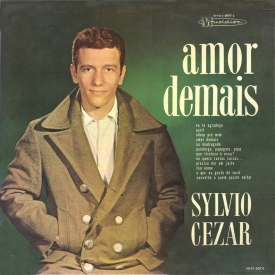
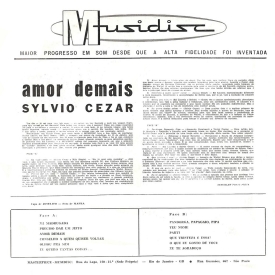
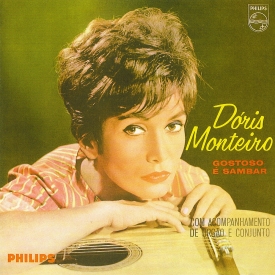
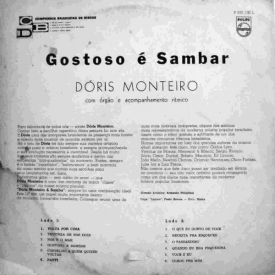
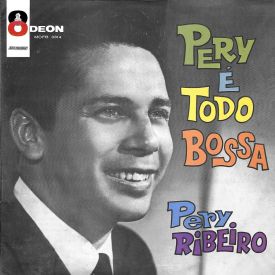

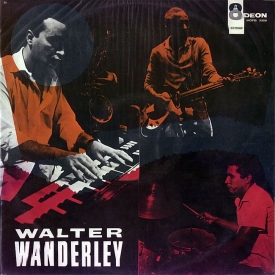
![]()



